The calendar showed May 2, 1972, when J Edgar Hoover He died of a heart attack at his home in Washington, D.C., at the age of 77. A highly controversial figure in the USA during the 20th century, Hoover, racist, fanatical anti-communist, amoral, treacherous, dark, behind-the-scenes, extortionist, manipulative, vindictive, uncontrollable, above all authority, but also incredibly organizational, master of invisible diplomacy and protagonist of modern American history, he was the powerful head of the FBI for almost half a century, defining, controlling and marking like few of his time.
In today's text, 49 years after his death, we will try to approach the "phenomenon" Hoover, analyzing aspects of his character and making a brief passage through the most important stations of his life. Where dossiers, conspiracies, hacking, organized crime, arrests, prosecutions, surveillance, scandals, machinations, corruption, political opinions, violations of individual rights, falsification of the truth, authoritarianism , the perversions and the passions, were found in the "showcase" of the man who remained immovable in his post, counting 8 presidents and 18 general prosecutors during his tenure.
EXTREMELY CONSERVATIVE FROM LITTLE
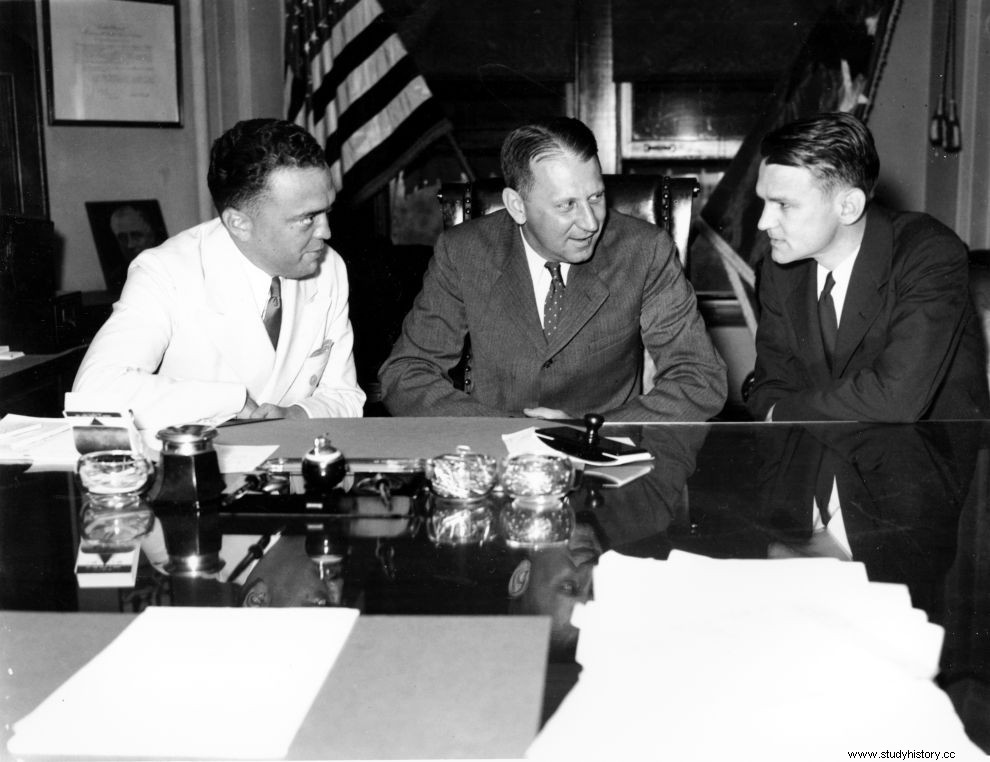
John Edgar Hoover was born on New Year's Day 1895 in Washington, DC. His father, Dickerson, was a successful lithographer, but ended up in an asylum after a nervous breakdown, forcing Edgar to work from an early age to support his family. He stuttered as a child, but overcame it by speaking very quickly, which earned him the nickname "speed" . This trait kept him throughout his life, making it difficult for stenographers to follow him. At school he was a member of the "dialogue group" and there his extremely conservative views were first seen, since he was against both the abolition of the death penalty and the right to vote for women.
He then studied law at George Washington University, while also taking a job at the Library of Congress. In 1916 he got a bachelor's degree and a year later he completed his master's degree. He was immediately hired at the Department of Justice and worked alongside Attorney General Alexander Mitchell Palmer, who had launched the famous "First Red Scare", the wave of prosecutions against communists, anarchists and other radical minorities in the US , immediately after the end of the First World War. Hoover had taken it upon himself to identify, track, and file "suspects," which would prove to be the favorite habit of his career.
THE COMPLETE REFORM OF THE FBI
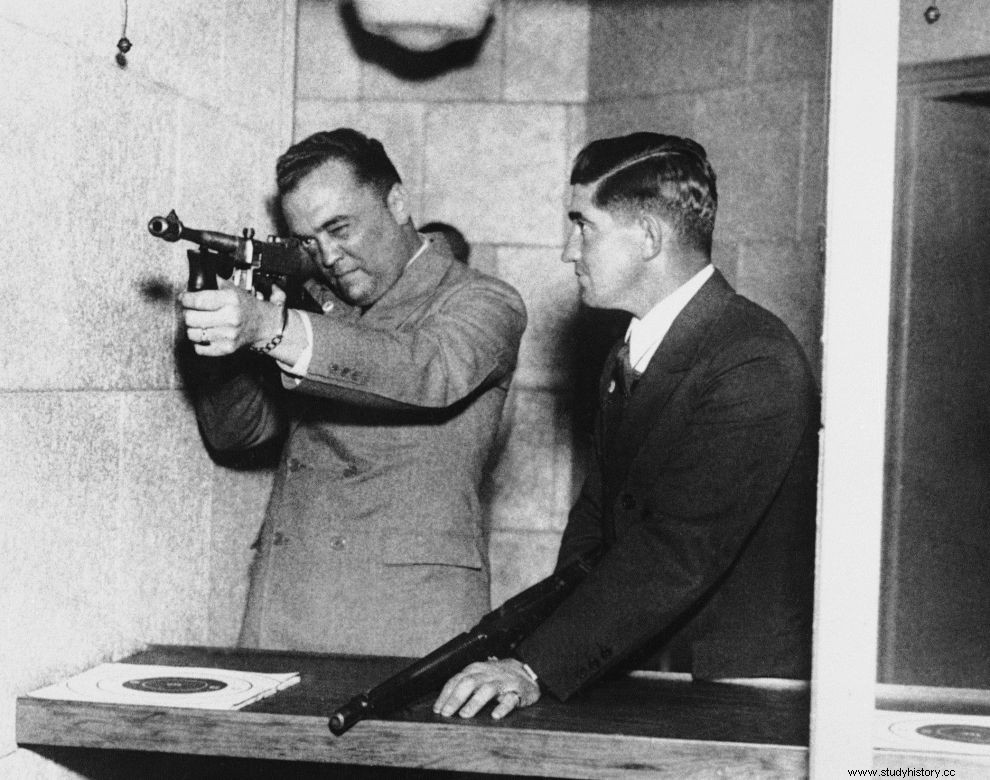
In 1921 he was transferred to the "Bureau of Investigation" (the original form of the FBI), in 1924 he became deputy director of the agency, and a few months later, US President Calvin Coolidge promoted him to the position of director general. The Bureau of Investigation was then in a state of dissolution, while many of its members were embroiled in a series of scandals. There, Hoover began an effort to rebuild the agency, with a series of targeted moves. He removed all agents he considered corrupt or worthless and instituted a program of strict hiring, training, and inspection procedures.
He banned alcohol on duty, required agents to be courteous to citizens, required them to declare all their incomes to the tax office, and threatened with prosecution those who maintained relations with politicians and parties. He introduced science into the service, creating many laboratories that examined everything:fingerprints, hair, fibers, blood, prints from objects and in general, evidence that could lead to solving crimes, revealing the culprits and proving their guilt. He also established the National Academy, where agents were trained in martial arts and the use of weapons.
ENCLOSURE ON HALF A MILLION AMERICANS
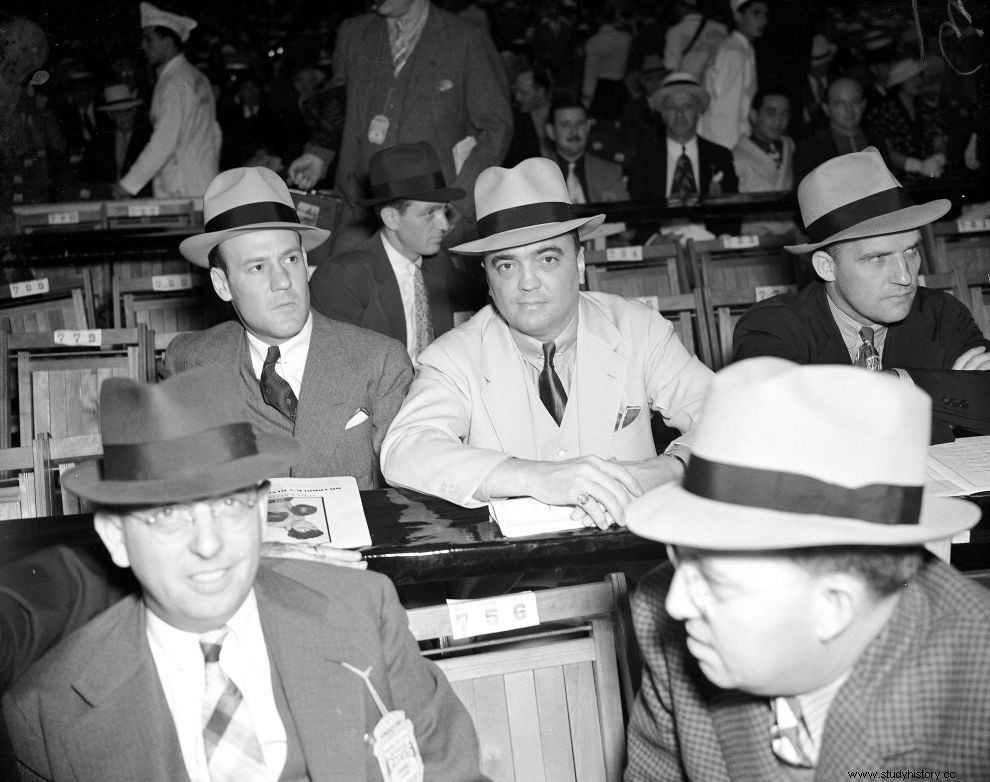
It was Hoover who set up the first fingerprint database, which soon grew into the world's largest. At the same time, the famous file began, with the recording of everything and their classification in special files that concerned either persons or cases. It is said that by the end of the 1960s, detailed information had been compiled on over half a million Americans, with complete biographies examining - among other things - the families, habits, hobbies, political affiliations and sexual preferences of the "suspects". ". In 1935, the Federal was added to the Bureau of Investigation and thus the FBI was officially born.
In the early 1930s, Hoover set his sights on gangsters, whose power had greatly increased during Prohibition (1920-1933). His greatest success came with the operation to capture John Dillinger, which resulted in the shooting and death of the notorious bank robber in July 1934 in Chicago. But unlike the natives of organized crime, Hoover did not - for many years - want to mix with the Italian mafia. He had even said the famous phrase "there is no mafia", refusing to publicly admit its existence. There were three main reasons for this selection of the head of the FBI.
REFUSING TO DEAL WITH THE MAFIA
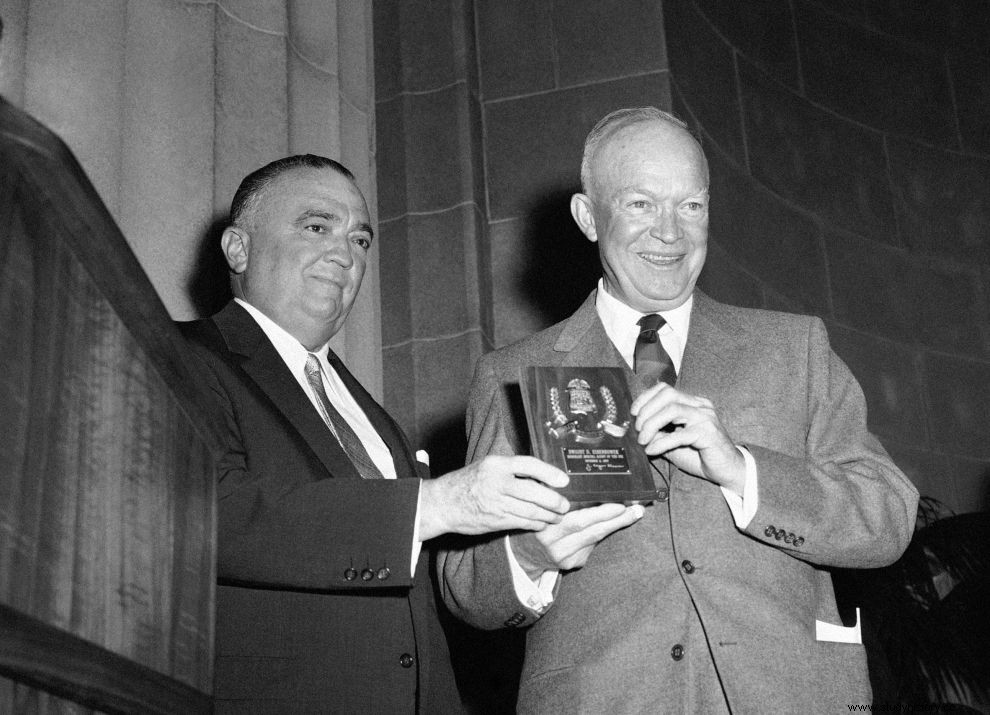
The first, his concern that investigations into mobsters would be lengthy and likely to lead to constant dead ends, which would jeopardize the reputation of his agency. The second, his concern that mobsters had a lot of money and could easily buy off agents. And the third, the power of the mafia that could corrupt politicians (representatives and senators), who in turn would be able to reduce the FBI's budget. For more than three decades, Hoover prohibited any operation against mobsters, until 1957 and the historic Appalachian meeting (The Appalachian meeting), which overturned the situation.
In that meeting, all the mafia bosses met to discuss the division of their activities (illegal gambling, casinos, drugs, usury etc). But local police, suspecting something strange was going on, raided and made dozens of arrests. The defendants received minor sentences, all of which were later overturned in the Court of Appeals, but the important fact was that the existence of a national crime syndicate was officially recognized, forcing Hoover and the FBI to completely change their attitude toward the Cosa Nostra and now treat it as an enemy of the state.
START IN "RED SCARE"

Many, however, argued that Hoover had not "dealt" with the Mafia for so many years because its representatives had at their disposal a lot of incriminating evidence about various hidden sides of the FBI chief's personality, which they had made sure to inform him about. , which eventually led to that long-term "truce" between the two sides. But let's go back to the late 1930s, when President Franklin Roosevelt tasked Hoover with monitoring both fascists and communists for possible espionage activity in the US. This was followed by the start of the Cold War and immediately after the period of McCarthyism, with the second period of the "Red Scare".
At the urging of President Dwight Eisenhower, Hoover focused on individuals and groups who had—or were alleged to have had—any form of "leftist" activity. For more than a decade, an incredible witch hunt began - in collaboration with Joseph McCarthy's commission - with countless interrogations and prosecutions of anyone who presented himself as a communist or "susceptible" to communism, with an endless list, which mainly included government officials, people of art, intellectuals, educators and trade unionists. Ernest Hemingway, one of Hoover's favorite "targets", had described the FBI of that time as the "American Gestapo".
OBSESSION WITH COMMUNISTS
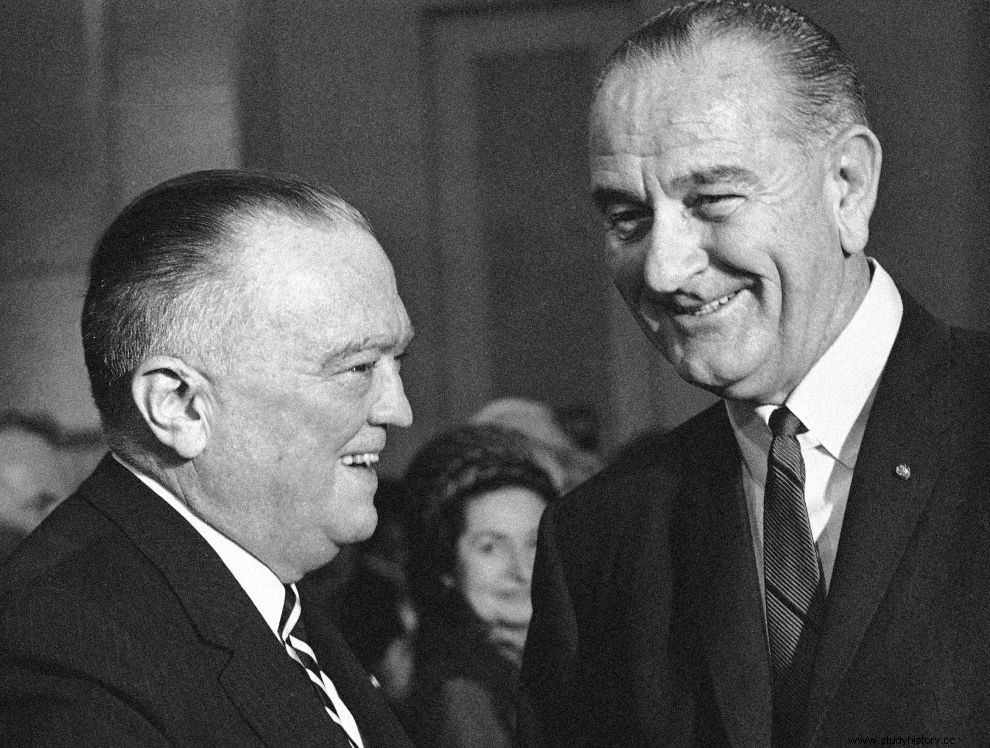
Many suspects lost their jobs, careers were ruined, and some defendants even went to jail. Hoover's agents engaged in a flurry of covert and illegal actions, wanting to tarnish the perceptions of leaders or personalities that the chief had their eye on. The Black Panthers, the Labor Party, but also Albert Einstein, Marilyn Monroe, George Orwell, Orson Welles and countless others, known and unknown, including one name on the list, that of Martin Luther King, who Hoover had called him "the most dangerous negro to the future of the country" and was watching him on a 24-hour basis, waiting to detect any "carelessness" of the black activist.
Such was Hoover's obsession with King that through illegal wiretapping he had discovered marital infidelities and leaked the material to the press. When the newspapers refused to publish it, then the head of the "Bureau" did not hesitate to send the tapes to King's wife, but also to himself, calling him to kill himself! Other known "targets" of the FBI chief were John Lennon, Muhammad Ali and Malcolm X, but Hoover appeared very unhappy with the decisions of the US Supreme Court, which greatly limited the ability of ordinary courts to convict accused for their political beliefs, especially the communists.
THE SHAME OF COINTELPRO
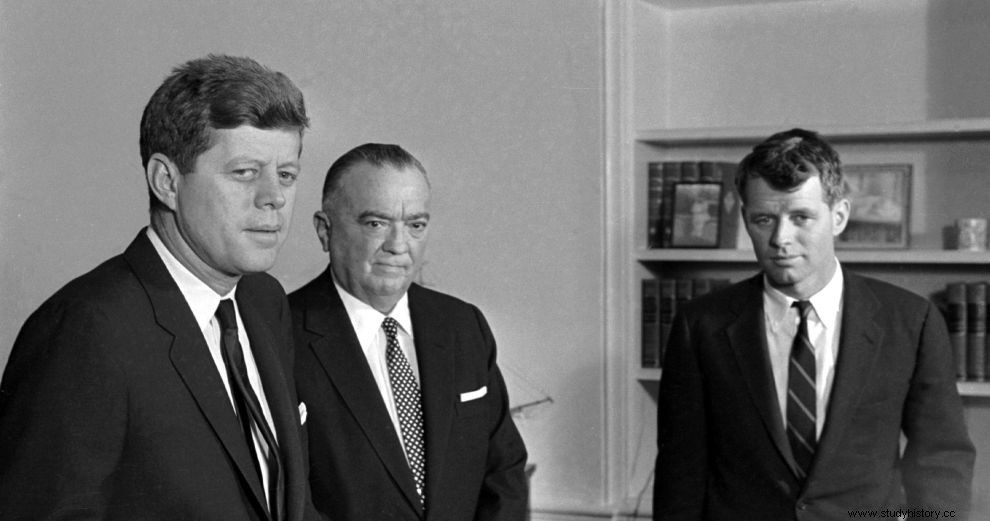
So, in 1956, he decided to create COINTELPRO (Counter Intelligence Program), a secret program intended for the implementation of "dirty" operations by FBI agents. One of the first missions of this new service was the continuous - and of course illegal - monitoring of the Communist Party of the USA, with the complete recording and photography of all who entered its offices. One of the victims of this operation was Charlie Chaplin, who was accused of communist propaganda! COINTELPRO's methods were the culmination of illegal activity with ongoing encroachments on the US Constitution and enshrined civil liberties.
Agents of the service carried out burglaries, wiretapping, installing bed bugs, placing forged and incriminating documents in the offices of the suspects under surveillance and of course spreading false rumors about key officials of various organizations, associations and movements. COINTELPRO's activity was exposed in 1971 and in 1975 it was declared unconstitutional by an appropriate Senate committee. And while all this was happening, the mafia continued its activities undisturbed, since as we said above, there was tacit tolerance on the part of Hoover, until the assumption of power by the Kennedys, who declared war against Cosa Nostra, with JFK as president of the USA and his brother, Bobby, as the country's attorney general.
HOOVER AND THE 8 PRESIDENTS
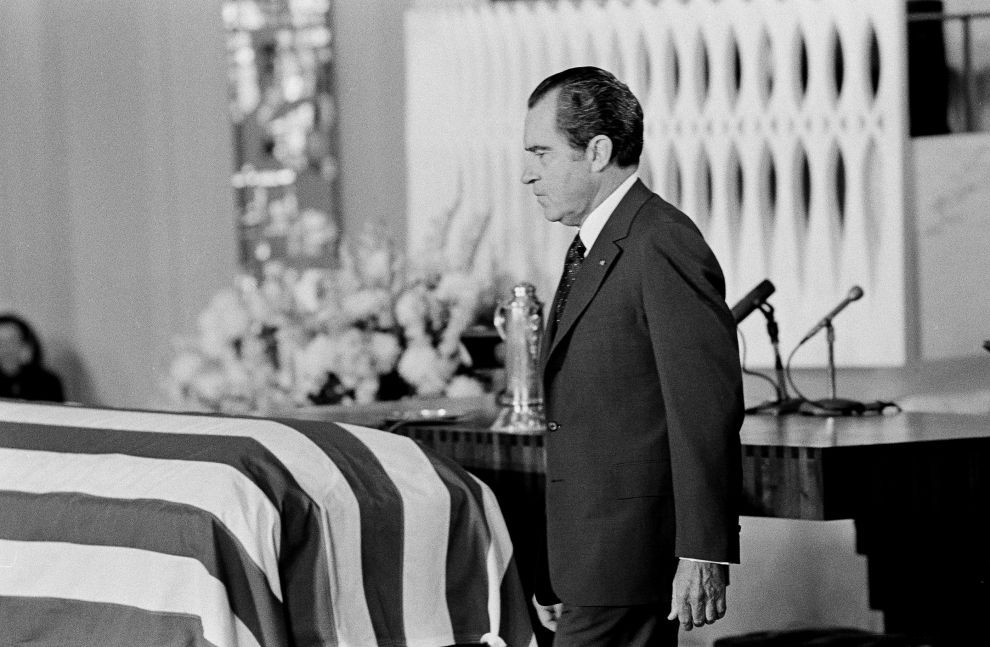
A special part of the career of J. Edgar Hoover, was his coexistence as head of the FBI with eight presidents of the USA! Calvin Coolidge (1923-1929), Herbert Hoover (1929-1933), Franklin Roosevelt (1933-1945), Harry Truman (1945-1953), Dwight Eisenhower (1953-1961), John F. Kennedy (1961-1963), Lyndon Johnson (1963-1969) and Richard Nixon (1969-1974), either worked with him or were forced to put up with him in his place, fearing revelations from his famous files about their personal lives. Hoover was on good terms only with Coolidge, Roosevelt and Johnson. On the contrary, Truman, Eisenhower, Kennedy and Nixon wanted to fire him, but did not dare.
When Hoover died in 1972, Nixon, who had ordered all flags flown at half-staff, publicly described him as "one of the giants, a national symbol of courage, patriotism, honesty and integrity." But when he was informed of his death, his first private comment was:"Jesus Christ, that old cocksucker!", which I don't think needs translation. The problem with presidents who wanted to get rid of Hoover, in addition to his files, was his enormous popularity with the common people. The reform of the FBI and the great successes with the arrests of known gangsters, made him a hero in the eyes of the average American, so a possible dismissal would bring with it a huge political cost.
THE "UNWASHED" AFTER HIS DEATH
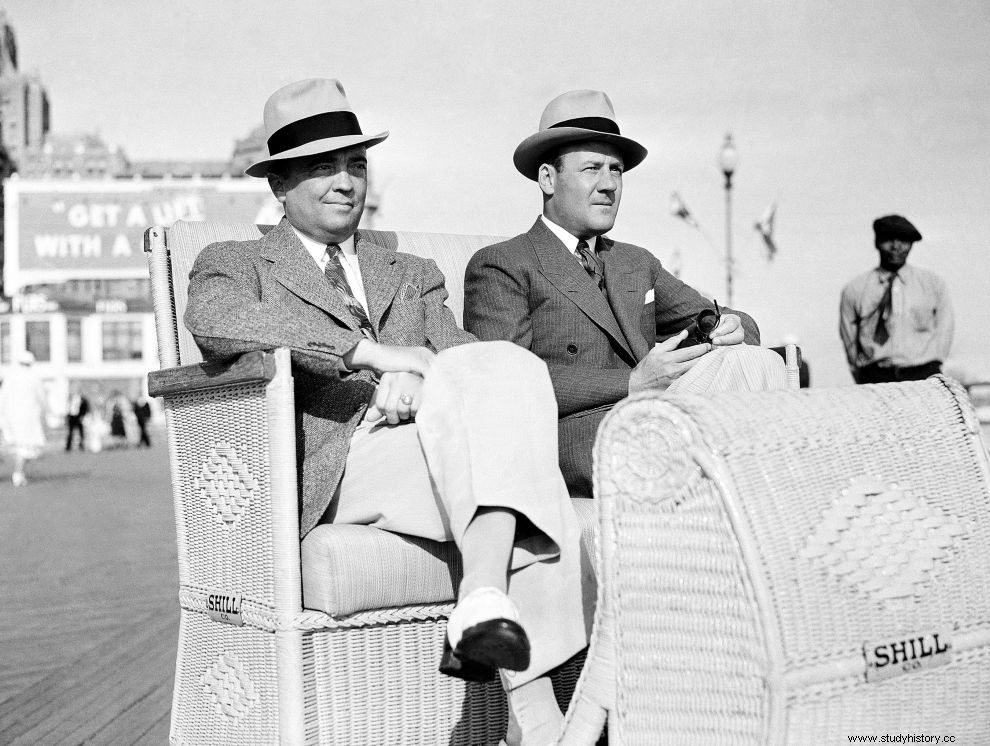
When after his death, his beliefs, his FBI tactics and the hidden aspects of his personal life began to be revealed, it slowly began to be understood how corrupt the "background" of his living iconography was. It was then that the citizens of the USA realized how dangerous power had been in the hands of a single man for nearly half a century. The "unwashed" that came to light were so many that even his fanatical fans could not manage them. One of them was the big question mark regarding his sex life. Hoover never married and there was always a rumor - without proof - that he was gay.
The director of the FBI had in his possession a huge collection of pornographic films, mostly of Hollywood stars, before they were famous, that is, he "combined" the terpon after the util. He is said to have had lithographs of men with huge phalluses in his bathroom, and there were rumors of his penchant for dressing up in women's clothing at private parties. There was also much discussion about Hoover's relationship with his close associate of 45 years and also a bachelor, Clyde Tolson, to whom the deceased left most of his property in his will. Rumor had it that the two were a couple, but that's something we'll never know for sure.
THE BIGGEST STATE BREAKER AND EXTORTIONER
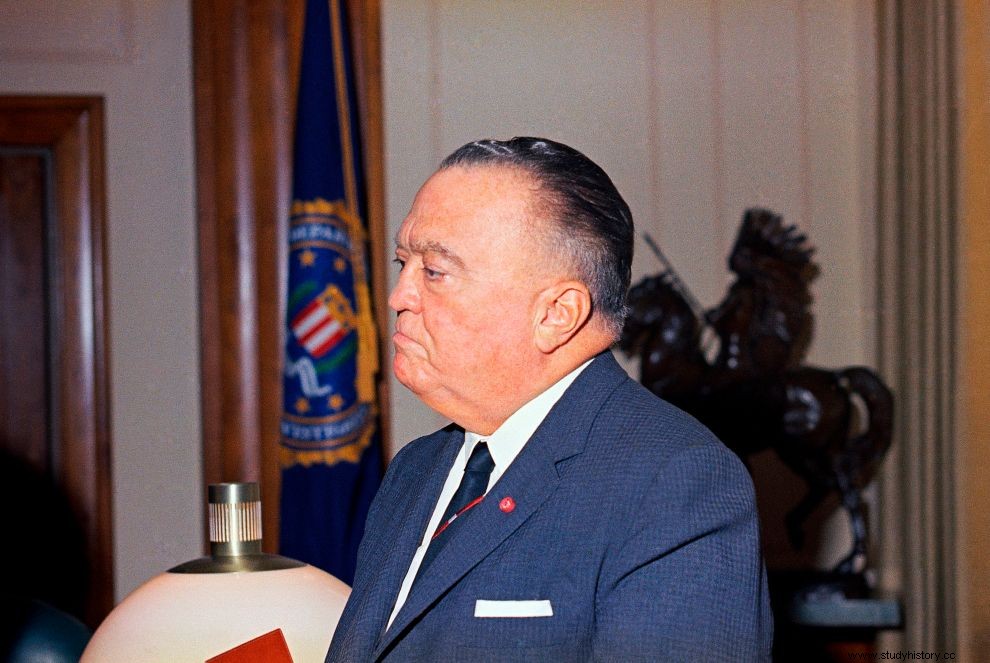
What is in no way open to dispute is the unprecedented immunity given to Hoover by the classified files, the most important of which he kept in a safe at his home, not allowing access to anyone else. The FBI director's agenda contained all the trappings of one of the most dangerous, corrupt and unscrupulous minds in the US power game of the 20th century. His obsessions, his bigotry, and the complete recklessness of his action, deprived many thousands of Americans, not only of their dignity and work, but even of their liberty and life.
As great as his work has been in the organization of the FBI, his dark side will be the one that tips the scale down, speaking of a man who, in his position as the defender of the law, repeatedly violated the constitution, falsified even more times the truth and adopted an extreme racist speech, turning his power into a nightmare for anyone who did not fulfill his, sacred triptych, that is, for anyone who was not white, Christian and right-wing. His behind-the-scenes action left behind countless victims, giving his reputation what it truly deserved:rage, contempt and the stigma of perhaps America's greatest government henchman and extortionist of the last century.
